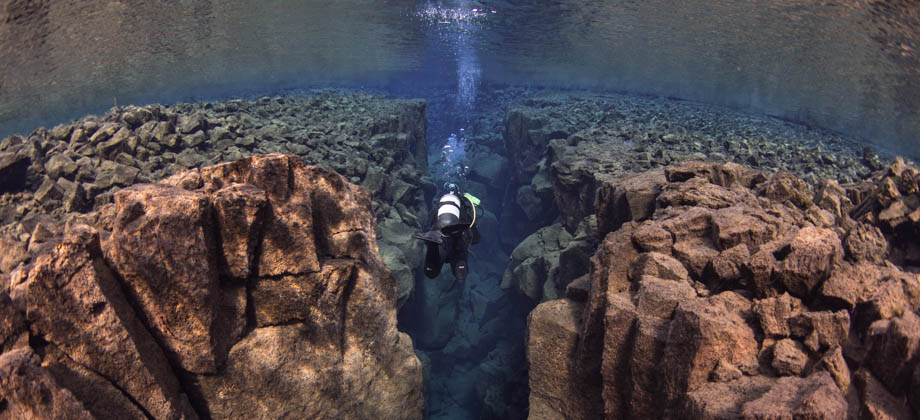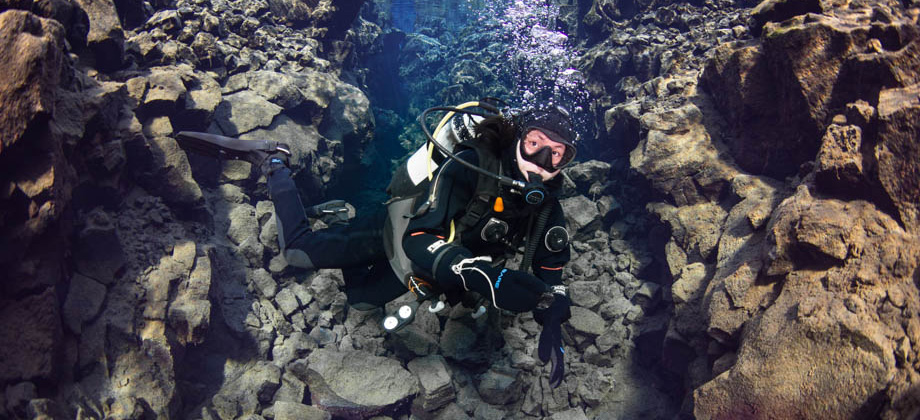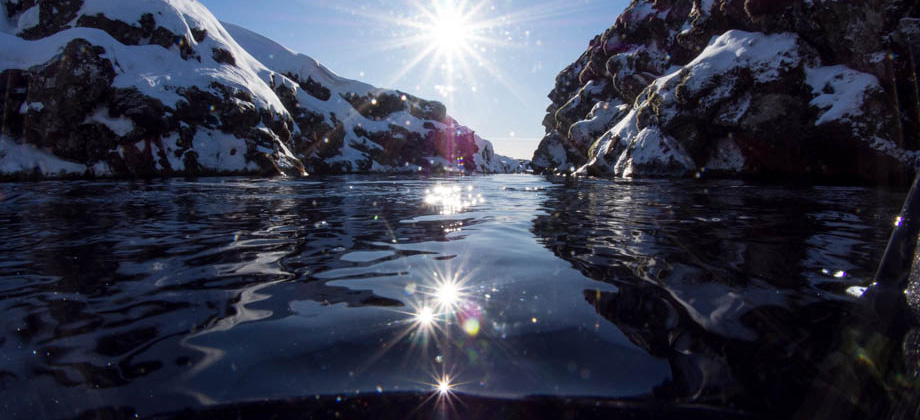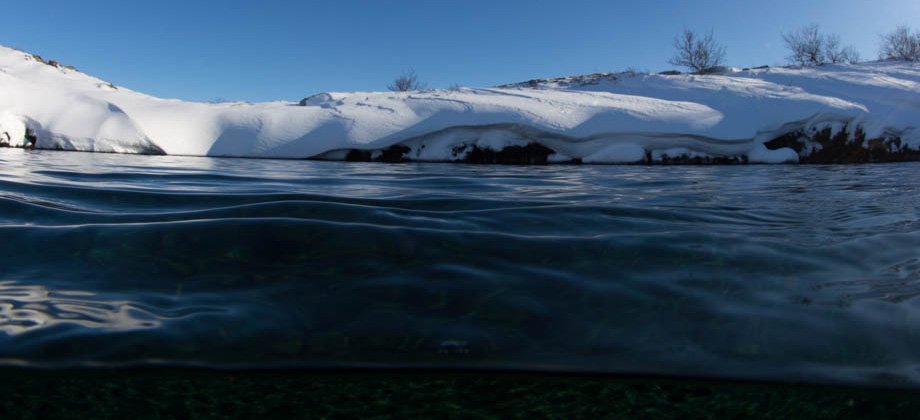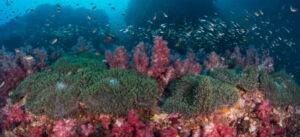Silfra Fissure
The Dive
The dive begins with a short walk from the carpark

towards the stairwell

that descends into the Silfra Fissure. Just behind the stairwell is a hole of sorts that is referred to as the 'toilet bowl'. The reason for this is because the hole links to a small tunnel that is approximately 16 metres deep, that the water from the underground spring travels through on its way into the fissure. The tunnel was also used in the past to 'flush' scuba divers, hence the name, into the fissure itself using the pressure of the water that is generated by the narrow opening. This is now rarely done, however, as the stability of the tunnel is supposedly compromised. There are also networks of cave passages behind the tunnel towards the direction of the carpark, but they are not accessible to recreational divers.
Once divers descend the stairwell, they enter the first section of the Silfra Fissure that is known as the '
Big Crack'. This section is more than a hundred metres long and its deepest section reaches 45 metres. The depths of this section cannot be explored even though you may be certified to dive that deep, as Icelandic regulation does not permit divers to dive below the 18-metre open water recreational limit. Not only does this section contain the deepest parts of the fissure, but it also contains the narrowest as well as the shallowest. Divers usually stop at the narrowest part to take pictures as they are able to touch both sides of the fissure at the same time to give the impression that they are pushing the continental plates apart. The shallowest parts also end up making the dive a multi-level dive as divers have to shallow up multiple times to pass through three 'islands' that are only about 0.5 metres deep.
 Fiona and I entering the 'Cathedral'
Fiona and I entering the 'Cathedral'
The second section is known as '
Silfra Hall'. The fissure widens out to about 8 metres at this point and the walls become less sheer. Not too long after, divers enter the third section which is known as the '
Silfra Cathedral'. It is this section where divers can truly appreciate the astounding visibility of the filtered glacial water. The section is about 20 metres deep but a hundred metres in length, and divers are usually able to see all the way past the field of boulders to the wall at the very end! The end of the cathedral is marked by a sandy slope that forces divers to ascend to about two metres. Right after the slope is a mandatory left turn

into the next section, as continuing straight will bring divers into the main body of Lake Thingvalla itself.
 The 'Little Crack' is quite shallow so a lot more red hues are captured in photographs
The 'Little Crack' is quite shallow so a lot more red hues are captured in photographs
The next two sections are called '
Little Crack' and '
Silfra Lagoon'. Little Crack is located a little off to the left of the lagoon and is a miniature fissure that lies parallel to the main fissure. The lagoon is a wide pool that gives divers another chance to test the unbeatable visibility once again. Divers can usually see all the way to the very end of the pool, a point that lies 120 metres away! The lagoon is also shallow and the bottom is very sandy, so it becomes very easy for novice divers to kick up sand. The sand is so fine, in fact, that if you go close and make a pumping motion with your hands, the entire floor seems to pulse very strangely along with the motion.
Just to the side of the lagoon is the stairwell

that marks the exit point, and once you climb out of the water, all that is left to be done is to wait for the feeling to return to your frozen lips and hands, before starting the short walk back to the carpark.
 Iced-over masks
Iced-over masks
 A beautiful sunset is always a great end to a great day!
A beautiful sunset is always a great end to a great day!





